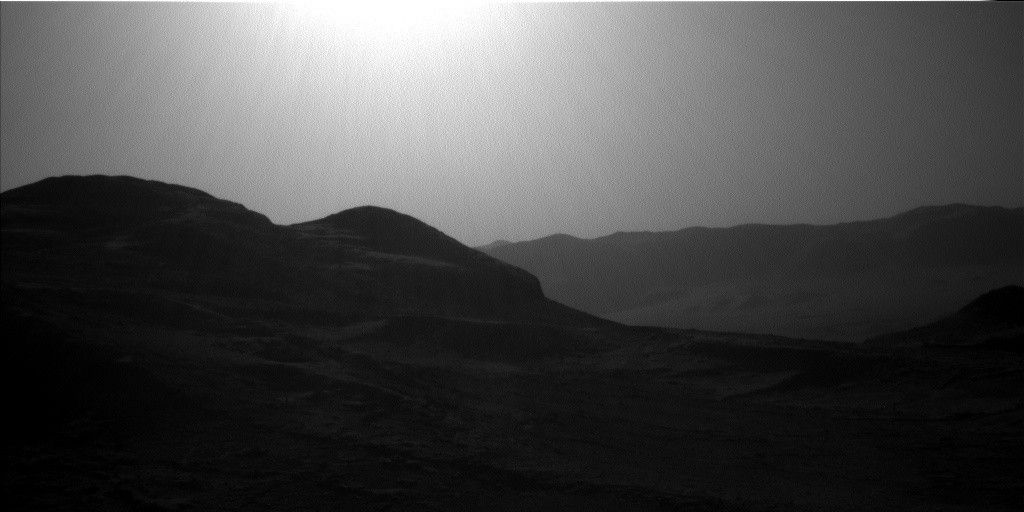- Curiosity Home
- Science
- News and Features
- Multimedia
- Mars Missions
- Mars Home
3 min read

Written by Ashley Stroupe, Mission Operations Engineer and Rover Planner at NASA's Jet Propulsion Laboratory
Earth planning date: Friday, Aug. 1, 2025.
Now that we have reached August, our "landiversary" (anniversary of landing - Aug. 5 PDT) is less than a week away! The team is looking forward to being able to celebrate the milestone of our rover becoming a teenager at 13. Today's image is a beautiful back-lit late afternoon image of the nearby mountains and the distant crater rim. These views make working on Mars never get old!
The first sol of today's plan is very busy because we will only have data from the first sol down in time for planning on Monday. Today I was working as a Rover Planner, supporting both arm and drive activities. We start first thing with arm activities; we DRT brush and do APXS integration on the target "San Cristóbal," which is a bedrock target, and the only place in the workspace smooth and flat enough for us to brush.
After a brief nap, we have an extensive imaging campaign. We take Mastcam images of the AEGIS target from the previous plan and two potential vein targets "Rio Satja" and "Río Ichilo." We then take Mastcam stereo mosaics of boxwork targets "Pontezuelo" and "Catedrales de Tara." Additionally we have stereo mosaics of "Llanos de Challe," a transition between the bedrock in the boxwork hollow and the boxwork ridge, a nearby light-toned exposure, and some additional troughs and ridges. ChemCam then takes a LIBS observation of "Airport Domes," which is another hollow in the boxworks. Finally, we take a ChemCam RMI and a Mastcam of Pontezuelo.
After finishing all the imaging, we continue with the rest of the arm activities. We split the arm activities to accommodate conflicting constraints - both APXS and ChemCam both need to be as early as possible. In this set of arm activities, we begin with MAHLI imaging of the two targets, San Cristóbal and "Salar de Agua Amara," which consists of delicate branching structures likely made by groundwater.
After another short nap, we do a small adjustment in our position to get another interesting piece of bedrock ridge in our workspace. In order to approach it at a good angle, we first drive parallel to the ridge to be lined up with the target, and then we turn and drive straight to it. Due to constraints on how we like to park at targets, sometimes these shorter drives can be more complicated than longer ones - but today it was simpler. After completing the drive, we unstow the arm to get a clear view of our workspace for Monday's planning as well as our standard post-drive imaging and then Curiosity goes to sleep for the night.
The second sol of the plan is a bit more leisurely. Around midday, Curiosity will be taking some atmospheric observations, including a Navcam dust-devil survey and a south-facing suprahorizon movie, followed by an AEGIS activity where the rover gets to pick targets and observe them herself. Then, early the next morning, Curiosity will wake up to take some additional atmospheric observations, including Navcam zenith and suprahorizon movies, Navcam line-of-sight toward the crater rim, and a Mastcam solar tau to measure dust in the atmosphere. Finally, she'll get a short nap before waking up to start the next plan.






